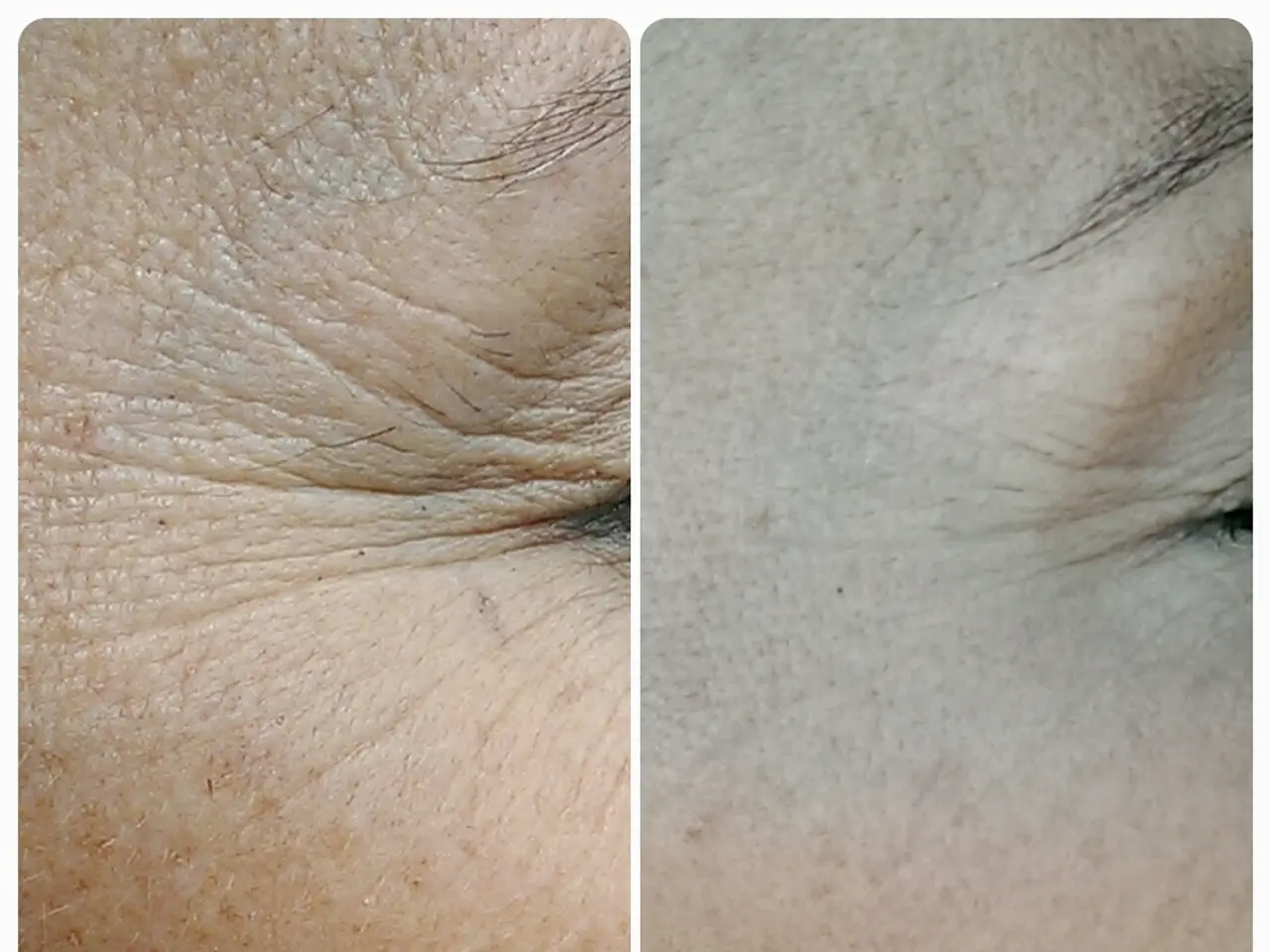Comparing Glycolic Acid and Salicylic Acid: Which Offers the Best Skin Results?
When it comes to skincare, two popular ingredients often mentioned are glycolic acid and salicylic acid. While they share the goal of improving skin health, these acids have distinct properties and benefits that make them suitable for different skin concerns.
Glycolic Acid: The Brightening Agent
Glycolic acid, an Alpha Hydroxy Acid (AHA) derived from sugar cane, is known for its ability to penetrate deeply into the skin, exfoliating dead skin cells and revealing a smoother, brighter complexion. Its deep penetration makes it great for brightening dry or sensitive skin and promoting radiant skin. Glycolic acid stimulates collagen production, which helps maintain youthful-looking skin and reduces fine lines and wrinkles.
Glycolic acid is particularly beneficial for those seeking to brighten their complexion or address concerns like uneven skin texture, age spots, or hyperpigmentation. It's more suitable for individuals dealing with dry, aging, or dull skin due to its ability to stimulate collagen production and promote cell turnover.
However, it's important to note that glycolic acid should not be used together with salicylic acid. Instead, use these acids on alternating days to avoid potential irritation.
Salicylic Acid: The Acne Fighter
Salicylic acid, on the other hand, is an oil-soluble Beta Hydroxy Acid (BHA) that penetrates pores. It helps prevent and treat acne breakouts by breaking down excess oil and dead cells within the pores. Salicylic acid is particularly effective for oily or acne-prone skin, as it clears clogged pores, reduces oil, and fights acne-causing bacteria.
In addition to its acne-fighting properties, salicylic acid works as an anti-inflammatory, reducing redness and irritation associated with acne breakouts.
For those with acne-prone and oily skin, salicylic acid is the better choice due to its oil-soluble nature that allows it to penetrate deep into pores and break down excess oil.
Using Glycolic and Salicylic Acids in Your Skincare Routine
When using glycolic acid, start with a gentle cleanser to remove dirt, oil, and makeup, then choose a product containing glycolic acid, such as a serum, toner, or peel, and apply it to the skin.
For salicylic acid, use a cleanser with salicylic acid, wet your face, and gently massage the product into your skin, focusing on areas prone to breakouts.
Both acids can cause purging in the early stages of use, but this is temporary and usually resolves within a few weeks as the skin adjusts to the new routine. It's best to start with lower concentrations for both acids and gradually increase usage as your skin builds tolerance.
Avoid mixing glycolic or salicylic acids with other potent exfoliants, such as retinol or vitamin C, as this can cause irritation and compromise your skin barrier.
Choosing the Right Acid for Your Skin
Understanding the differences between glycolic acid and salicylic acid will help choose the right products for your skincare regimen. If you are unsure which acid is right for you, consult a dermatologist to make the best choice for your skin type.
| Feature | Glycolic Acid (AHA) | Salicylic Acid (BHA) | |-----------------------|---------------------------------------|----------------------------------| | Solubility | Water-soluble | Oil-soluble | | Mechanism | Exfoliates surface dead skin cells | Penetrates and unclogs pores | | Best for | Dull, aging, rough, uneven skin | Acne-prone, oily, clogged pores | | Molecular size | Small, penetrates upper skin layers | Larger, stays on surface/pores | | Suitable for | Dry/normal skin | Oily/acne-prone skin | | Additional benefits | Brightens, fades dark spots, boosts collagen | Reduces oil, fights acne, anti-inflammatory |
In summary, glycolic acid is ideal for brightening dull, uneven, or aging skin by promoting cell turnover, reducing fine lines, and fading dark spots. Salicylic acid, on the other hand, is most effective for acne-prone or oily skin because it clears clogged pores, reduces oil, and fights acne-causing bacteria.
When it comes to skincare, glycolic acid, an Alpha Hydroxy Acid derived from sugar cane, is a brightening agent that penetrates deeply into the skin, exfoliating dead skin cells and revealing a smoother, brighter complexion. It stimulates collagen production, helping maintain youthful-looking skin and reducing fine lines and wrinkles, making it beneficial for those dealing with dry, aging, or dull skin due to its ability to stimulate collagen production and promote cell turnover. On the other hand, salicylic acid is an oil-soluble Beta Hydroxy Acid that penetrates pores and helps prevent and treat acne breakouts by breaking down excess oil and dead cells within the pores. Salicylic acid is particularly effective for oily or acne-prone skin, as it clears clogged pores, reduces oil, and fights acne-causing bacteria.
In your skincare routine, use a cleanser to remove dirt, oil, and makeup before applying a product containing glycolic acid, such as a serum, toner, or peel. Salicylic acid can be found in a cleanser that you wet your face with and gently massage into your skin, focusing on areas prone to breakouts. Both acids can cause purging in the early stages of use, but this is temporary and usually resolves within a few weeks as the skin adjusts to the new routine.
Understanding the differences between glycolic acid and salicylic acid will help you choose the right products for your skincare regimen. Glycolic acid is water-soluble, exfoliates surface dead skin cells, and is best suited for dry/normal skin. Salicylic acid, on the other hand, is oil-soluble, penetrates and unclogs pores, and is ideal for oily/acne-prone skin.
Using both acids in your skincare routine can lead to irritation if mixed with other potent exfoliants, such as retinol or vitamin C, so it's best to use them on alternating days or consult a dermatologist for guidance. Glycolic acid aims to brighten the skin by promoting cell turnover, reducing fine lines, and fading dark spots, while salicylic acid fights acne by reducing oil, clearing clogged pores, and fighting acne-causing bacteria. Consult a dermatologist if unsure which acid is right for your skin type.
In the realm of health-and-wellness, skin-care, and fashion-and-beauty, the science behind glycolic and salicylic acid provides a deeper understanding of these popular skincare ingredients, ultimately leading to healthier and more radiant skin.




